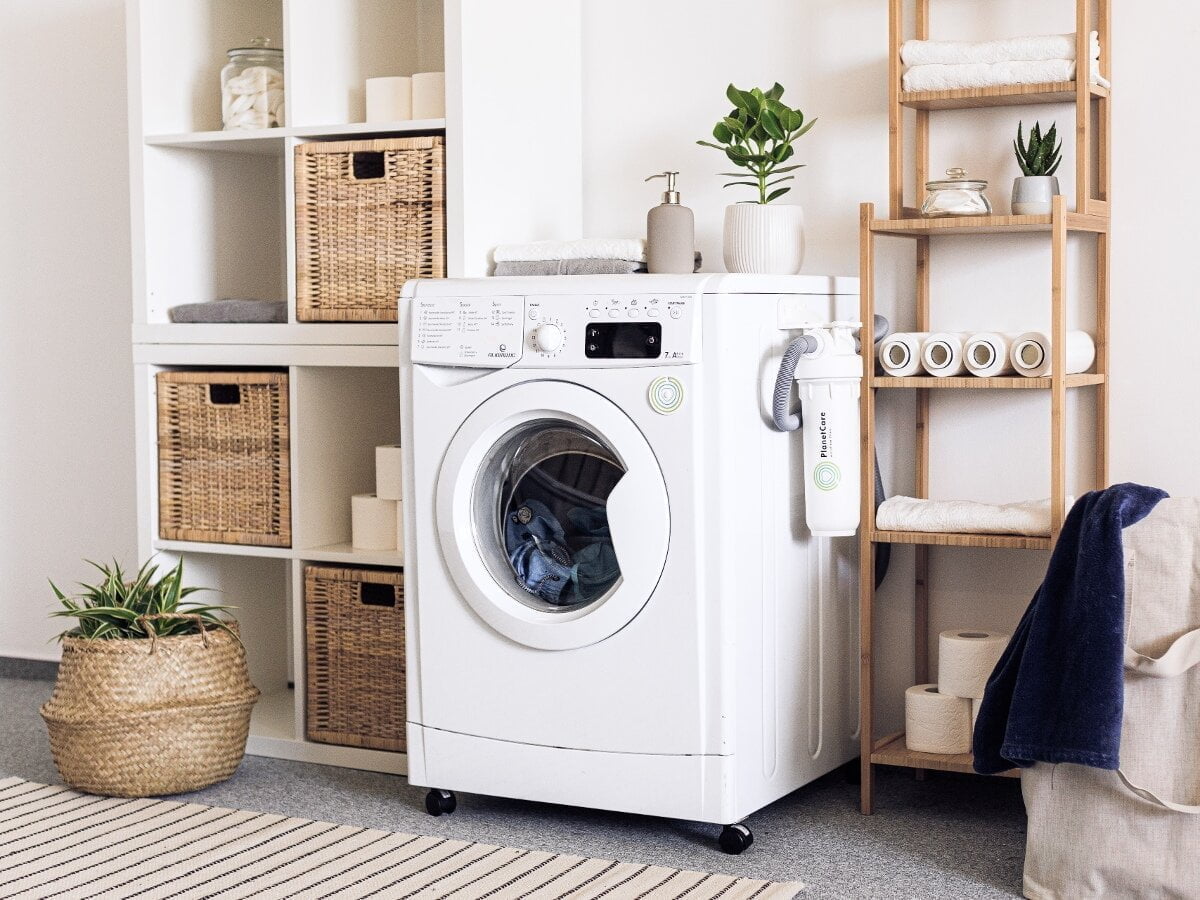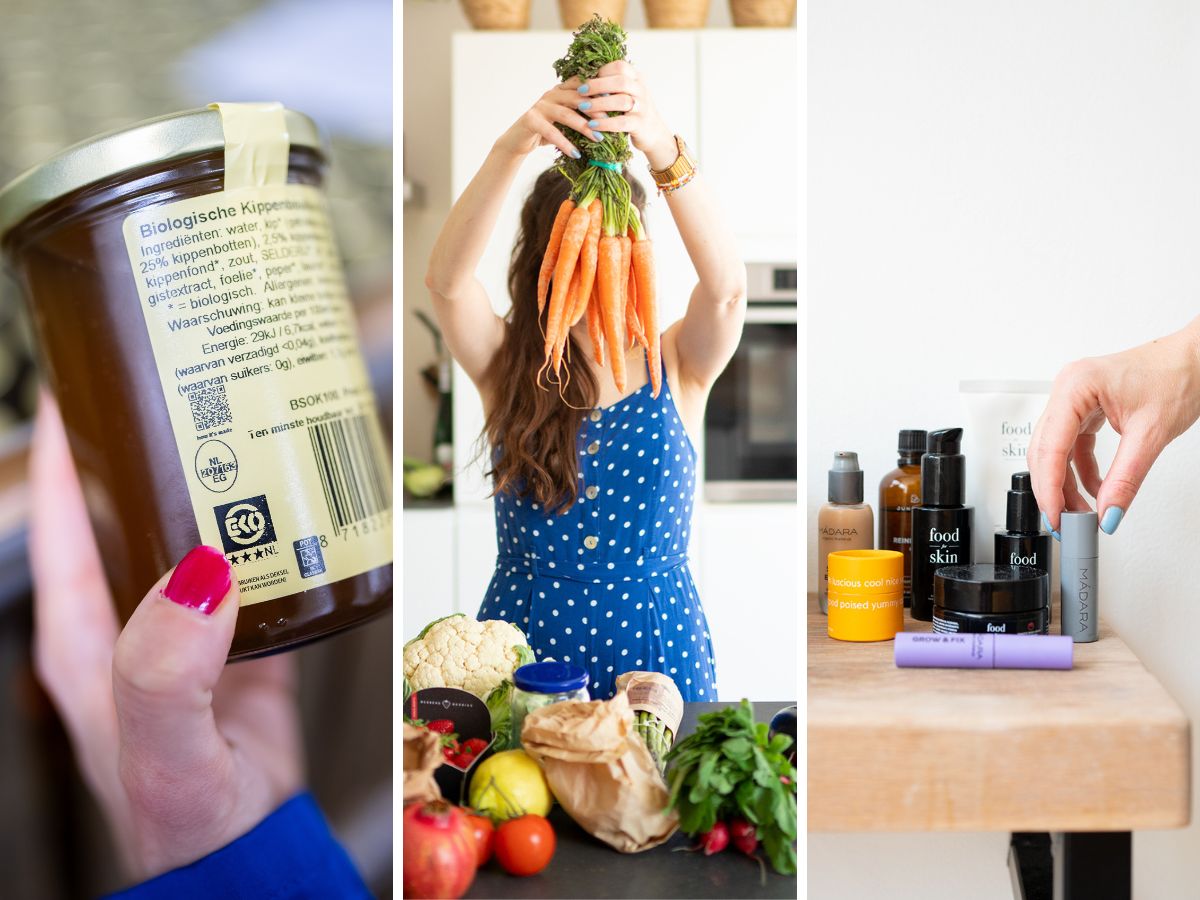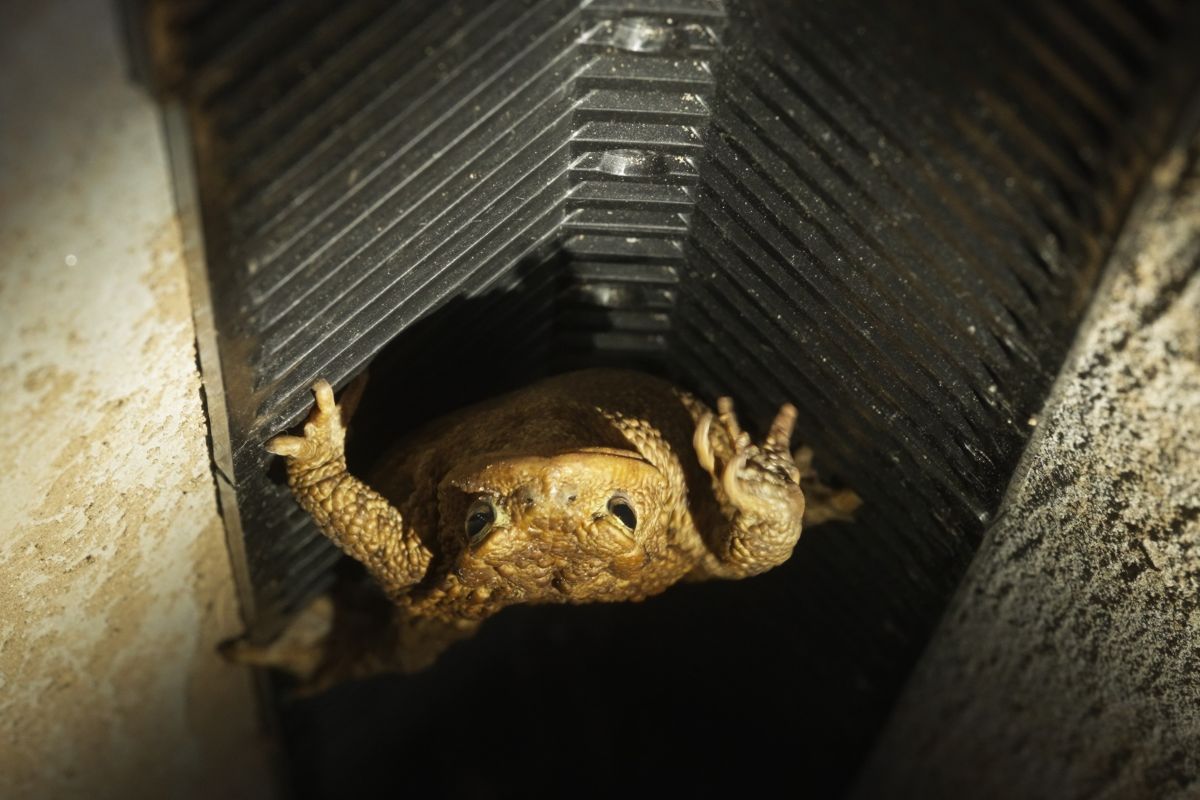That washing machine is handy, but do you remember to clean it regularly? This keeps your laundry really fresh and this precious appliance good for longer. Mascha is an expert in eco-friendly cleaning and shares her best cleaning hacks with us. This time, she shares how she takes good care of her [...] Guess what? Again, you won't need as much heavy-duty cleaning stuff as you think.
This is how to clean your washing machine in an environmentally friendly way
The washing machine is among the most widely used appliances in a modern household. Where would we be without that convenient machine that helps us get rid of laundry. Because the washing machine is used so often and intensively, it is also important to clean it regularly. This way, you prevent accumulation of grease, dirt, dust and limescale, from which your machine can break down.
Want to know more about how you can use your washing machine more sustainably and thus environmentally consciously first? Then be sure to check out this article, because we have also figured this out for you. Surprisingly, it is not the choice of your detergent that is the biggest hit you can make. Indeed, that's what many people often think... But it's all about - funny pun - how you use the appliance: wash less, wash colder and wash on eco mode. Ultimately, the biggest load is heating the water - in short, the energy the appliance needs to get the job done. A washing machine that is not cleaned regularly cannot do its job as well, is less energy-efficient and may even break down sooner in the end. Now that's not sustainable! A dirty washing machine doesn't work as well, what exactly?
The consequences of a dirty machine
A washing machine with accumulated dirt and residue from previous washes creates friction between the clothes and the drum. This makes the machine run less efficiently, uses more energy and potentially damages your clothes. Especially if you like (sustainably!) washing at low temperatures, grease and dirt can build up and start causing problems. Grease lice in particular is something you don't want in your washing machine. Lint comes from the reaction of your detergent with grease, hair and dander, which are in your dirty clothes. So it's not really lice, should you think so, but dirt. Grease lice stay behind in the insides and rubber edges of your washing machine. This lice can cause unpleasant odours, prevent your laundry from washing clean, and even cause blockages because the water can no longer drain properly. Oy, we don't want that, of course.
Washing machine broken earlier due to poor maintenance?
It certainly can! Rubbers weather because dirt and soap residue remain on them. Clogged filters can also cause your washing machine to break down or malfunction. If the water does not drain properly or the rubbers do not work properly, you can get leaks as a result. In short, your washing machine can suffer usage damage due to dirt and soap residue not being removed properly. This puts you at risk of having to replace parts sooner or end up with a broken washing machine.
It is a panacea, it is natural vinegar
What is so surprising about this and a lot of other cleaning chores: your kitchen cupboard does not need to be brimming with bottles and jars to keep your home and appliances clean. With basic cleaning products like natural vinegar, baking soda, citric acid and green soap, you can do almost any job around the house. It saves lugging around bottles, it saves you money and it also helps our planet if we use these detergents less often. So too for the washing machine! For cleaning the washing machine, soda vinegar is often enough. You can find natural vinegar in any supermarket, usually on the (sunflower) oil shelf. It is edible, you can make delicious salad dressings with it, but it is also a powerhouse in your household. It degreases, descales, kills bacteria and makes foul odours disappear like snow in the sun. Just what your machine needs!
Want to know more about wet vinegar? Earlier, we shared a handy article with all kinds of cleaning tips for natural vinegar.



Some steps of washing machine cleaning: cleaning the drum and rubbers, cleaning the soap dish and running the washing machine at high temperature to give bacteria no chance.
Eco-friendly cleaning of your washing machine
Tools
- bucket or tub
- cleaning cloth
- soft cleaning brush
- dash of vinegar
- dash of green soap
Instructions
- Start by cleaning the rubbers and the inside of your washing machine door. With a damp old rag, wipe well between the rubbers of the door. Hold the rubbers apart with one hand and with the other, make sure all grease and dirt is in between. With a soft cloth, also clean the inside of your washing machine door.
- Then let the washing machine clean itself inside. Washing at low temperatures reduces energy consumption and is therefore an eco-friendly choice. But this can leave dirt and grease in your machine. Therefore, you should periodically clean your machine properly. Baking soda gets rid of dirt and grease and it also de-scaling your machine. Put a cup of vinegar in the drum and then run the machine on the hottest programme.
- Then pull the detergent tray out of the machine. To remove the tray, you may need a little pallet or knob. Check your washing machine manual for instructions. In many cases, you can simply put the detergent compartment in your dishwasher. Or clean it in a bucket with a soapy solution of green soap (all-purpose cleaner will do, by the way) and a soft brush. Don't forget to clean the inside of the soap dish with a cloth. Detergent residue can also remain in here. This is often caused by using too much detergent. More detergent usually does not make your laundry cleaner, quite the contrary. Dosing correctly is also an eco-friendly choice; less detergent needs to be produced and you save on packaging. A tablespoon of detergent is often enough for a clean wash.
- Also check your washing machine's filter and clean the inside with a damp cloth. Don't know where the filter is? Grab your washing machine's manual.
- Finally, use a soft, clean cloth to clean the outside of your machine. You can also use a bucket with a small splash of vinegar for this to remove greasy fingers and dust.
Cleaning your washing machine, are you ready?
By repeating this step-by-step plan regularly, your washing machine and clothes will stay nice and fresh, your machine will last longer and you will use less energy. So cleaning for a better planet really does exist, but it has a lot to do with the choice of cleaning products you use. If you have another great cleaning tip for the washing machine, I'd love to hear it. You can use the follow and contact buttons at the bottom of the page with thegreenlist.nl get in touch. Otherwise, I say good luck with it! Put on headphones with a nice playlist or podcast, and go with it! If you keep it up regularly, it will be a snap. Still looking for durable headphones? Then check out The review on Repeat (with discount code). And I also have a fun podcast on offer! Those sustainable girls of course, the podcast of thegreenlist.nl!
More sustainable cleaning tips from thegreenlist.nl
- Baking soda is also a panacea. Read the best tips for eco-friendly cleaning with baking soda here.
- Less washing is more sustainable. Check out tips for keeping clothes clean without washing here.
- Do you have a dryer? This is how to get the dryer clean properly and environmentally friendly.
Photo credits: main image: Planetcare (Unsplash), naturel: Olia Danilevich (Pexels), other photos: Mascha Bongenaar.













